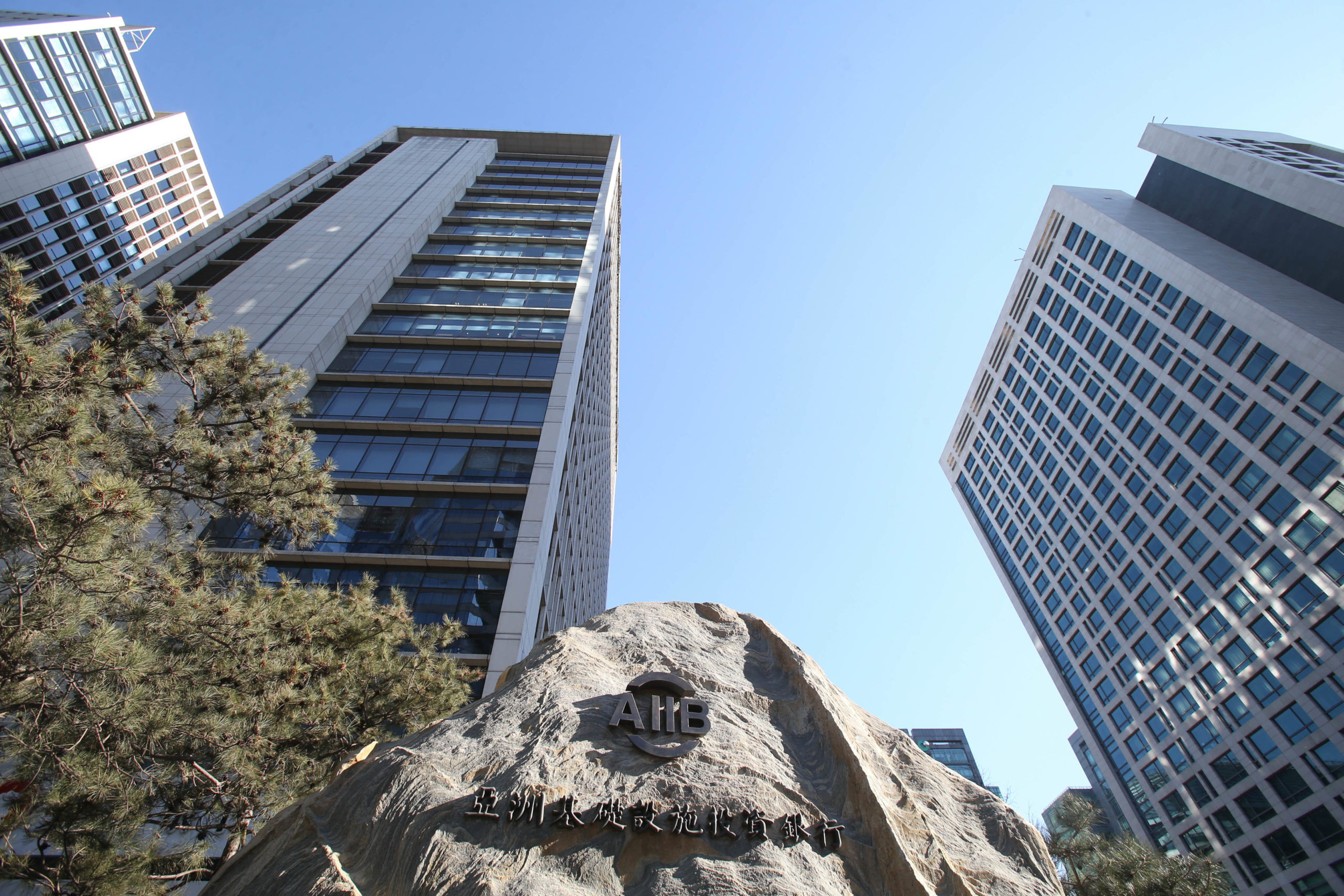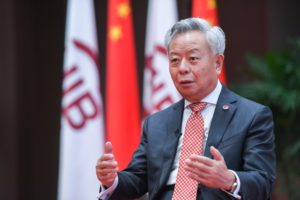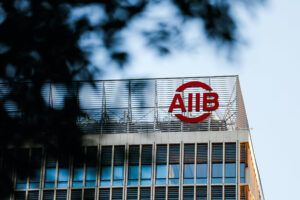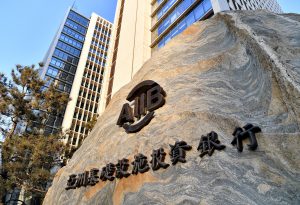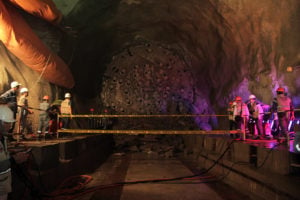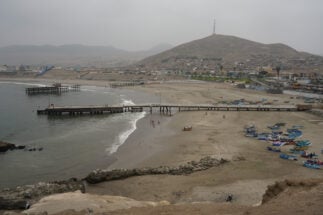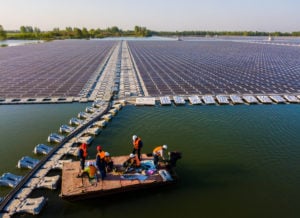This month, the Asian Infrastructure Investment Bank’s (AIIB) board of directors meets to decide whether to approve the bank’s proposed new environmental and social framework. The board, made up of member government representatives, should pay close attention to a glaring loophole: a new mode of development financing, which seeks to attract private investment in infrastructure through capital markets, is expressly excluded from the framework’s application.
Recently, the AIIB has launched a series of new operations aimed at attracting institutional investors to finance infrastructure development in Asia. The contention that more private capital is necessary to meet the region’s enormous infrastructure needs is not a new argument, and other development finance institutions have devised instruments with the same objective. However, the AIIB’s new capital market operations take this strategy to a precarious new level: the process is handled by a third-party asset manager, which makes decisions about investments in publicly traded securities (eg bonds) through capital markets. Underpinning these operations is the promotion of infrastructure as an asset class, whereby financial institutions bundle together groups of infrastructure investments that have similar characteristics to make them easier to invest in. This is not development as we know it.
Infrastructure projects, such as power plants, roads and railways, can provide services and facilities that are necessary for businesses to operate and improve people’s quality of life. But their development also comes with risks to people and the environment, including forced displacement, destruction of forests and biodiversity, and pollution of air and water sources. In many countries, opposition to investment projects that threaten the rights of communities is met with repression.
Following a series of high-profile infrastructure disasters, since the 1980s development banks, like the World Bank, have required governments and companies to agree to a set of environmental and social standards in order to secure financing to develop infrastructure projects. These standards have been crafted by sociologists, environmental scientists and lawyers with input from civil society experts and grassroots activists. While they are not perfect, when applied properly they mitigate the devastating harm that infrastructure projects can cause.
The AIIB adopted its own environmental and social framework in 2016, and its board is now deliberating on an updated version. While in some respects, the framework is not as robust as those at other multilateral development institutions, it nonetheless provides important guardrails for preventing harm in AIIB-supported projects.
So why should these guardrails not apply to capital market operations, which aim to vastly expand the development of infrastructure across Asia? And why are these operations exempt from the bank’s independent accountability mechanism? Unlike anyone else harmed by AIIB-supported projects, people affected by projects financed through capital market operations will not have access to the bank’s Project-affected People’s Mechanism to seek redress. What’s more, because there is zero public disclosure of specific portfolio investments by either the AIIB or the asset managers, there is no way for affected communities to know that the AIIB has contributed financing to the project in any case.
Companies with poor environmental and social track records should be excluded from AIIB capital market investments
The AIIB argues that capital market operations can’t be subject to its regular environmental and social accountability system. The bank contends that its normal safeguards aren’t appropriate for these projects because “environmental and social performance is more suitably assessed at the corporate rather than the asset level.” In other words, an asset manager can’t feasibly assess the risks on local communities of individual infrastructure projects under this investment model.
Yet the bank knows it can’t just ignore the grave risks that infrastructure projects pose. So it has proposed an alternative, which it calls “ESG Frameworks”. Environmental, Social, Governance, or ESG, is a nebulous concept that is essentially institutional investors’ solution to the same problem of exposure to serious harms that the World Bank confronted in the 1980s. But, there is a vast difference between ESG frameworks and the environmental and social accountability systems adopted by the World Bank and other development banks.
ESG is a fast-growing industry that is worth approximately $40.5 trillion. What began as a rudimentary way for investors to exclude from their portfolios companies that operate in controversial industries, such as tobacco and weapons, has grown into a complex ecosystem in which dozens of ratings firms score companies using proprietary, big-data methodologies. Asset managers then use these ratings to construct ESG funds that invest in high-performing companies.
But even with these developments, ESG, as it exists today, is profoundly flawed. ESG ratings rely predominantly on corporate self-reporting as opposed to independent, robust third-party reports – or reports from affected communities themselves – and often fail to capture realities on the ground. Large companies tend to score best, because they have resources to devote to reporting, even when they are linked to operations with serious negative impacts. ESG ratings for the same company are often inconsistent across ratings agencies.
But even if these flaws were addressed, ESG tools do not function as a risk assessment and management system. They essentially help investors channel money toward companies that rate well across a range of environmental, social and governance areas, and limit investment in those that don’t. That may be a worthy goal for private investors, but it’s no substitute for the environmental and social safeguards that prevent harms from infrastructure development on the ground.
ESG ratings do not reflect nuance in corporate performance in particular assets where impacts are experienced. The simplicity of an overall corporate score is indeed the appeal of ESG ratings for capital market projects. But without going deeper and assessing risks and performance at the project level, the AIIB unavoidably opens itself up to exposure to adverse impacts. The AIIB has a responsibility, as a public development finance institution, to safeguard against these impacts in its capital markets operations in the same way that it does in any other type of investment.
The ESG approach seeks to advance the AIIB’s “lean, clean and green” strategy. It’s an attempt at a non-bureaucratic, efficient mode of investment that mobilises private capital. But while it may be lean, it’s neither clean nor green. By carving out this loophole for capital market operations, the AIIB eviscerates critical guardrails needed to avoid foreseeable social and environmental harms. This is exacerbated by the transparency void in which these projects operate, with no public disclosure of portfolios, and no information published on how the bank interacts with fund managers.
The AIIB should take a different tack.
Instead of excluding capital market operations from the Environmental and Social Framework, the framework should be adapted to integrate them, as it currently does with projects involving financial intermediaries, such as commercial banks and private equity funds. Specifically, the framework should require asset managers to establish environmental and social management systems equipped to conduct robust due diligence to assess and monitor portfolio companies’ conformity with the AIIB’s Environmental and Social Standards. If companies cannot demonstrate they can meet those standards, or if they have a poor track record on environmental and social performance, they should be excluded from AIIB capital market investments.
While this may limit the speed at which portfolios can grow and reduce the overall size of the portfolio, this is appropriate and necessary to ensure that the AIIB is investing in companies that are contributing to positive development outcomes and not causing harm to communities and the environment.
Portfolio companies’ higher risk projects should be monitored and leverage should be used to prevent, mitigate and address problems that are identified. If the company refuses to conform with the environmental and social standards, the asset manager should not just divest but it should publicly disclose its reasons for divesting. In such cases, the company should be barred from receiving any type of AIIB support until demonstrable changes are made, including remediation of harms.
The AIIB must also publish information regarding the ultimate destination of its funds. Although these projects concern investments in capital markets, the AIIB remains a publicly financed institution and should fulfil its commitments to transparency by publishing investment portfolios in full. Along with disclosure, communities harmed by these projects must be able to access the Project-affected Peoples Mechanism. Without this, public oversight and accountability of these projects is impossible.
As a new institution, there has been speculation around whether the AIIB will lower the bar or maintain globally accepted standards of multilateral institutions. As the AIIB seeks to achieve “proof of concept” with its approach to investing in capital markets, it has an opportunity to do more than that, and set a higher standard for other institutions seeking to explore similar paths. The AIIB’s first capital market operations can only mark a new opportunity for development finance if the bank demonstrates that these operations can be implemented in line with the basic tenets of transparency, accountability and respect for environmental and social standards. The first step is to remove these operations from the accountability black hole in which they currently reside and situate them squarely inside the AIIB’s accountability system. Otherwise, operations of this nature have no place in a multilateral bank’s approach to development finance.
